![]()
UNIVERSITY OF CALIFORNIA MATERIALS RESEARCH NEUTRON DIFFRACTOMETER PROJECT
HIPPO: HIgh Pressure - Preferred Orientation
HIPPO Progress: 12.10.2002
We are delighted to report that the HIPPO diffractometer is finally installed and operational. A user program has started in August and will continue through this run cycle. Much of the ancillary equipment is functional but of course, with a new instrument of this complexity, users have to expect to run into minor difficulties. However users can rely on competent and dedicated Lujan technical and scientific staff. Please note that neither Kristin Bennett nor Bob von Dreele are continuing their careers as instrument scientists at Lujan. HIPPO has a new instrument scientist, Sven Vogel (sven@lanl.gov) with a PhD in neutron physics and postdoc experience in materials science. His primary goal is to make HIPPO users satisfied. He works closely with a team of support staff, particularly Darrick Williams, a dedicated and competent postdoctoral scientist. Leilani Conradson (leilani@lanl.gov) is coordinating the user program at Lujan and you can contact her for information. As always, Lujan Director Alan Hurd (ajhurd@lanl.gov) is committed to have the HIPPO system meet expectations.
Information and NEWS about Los Alamos can be obtained from this link.
If you wish to do neutron diffraction experiments at other facilities, contact neutron sources with similar diffractometers and users programs, among them:

Conceptual design of HIPPO with T0 chopper, detector panels, sample chamber, and beam stop.
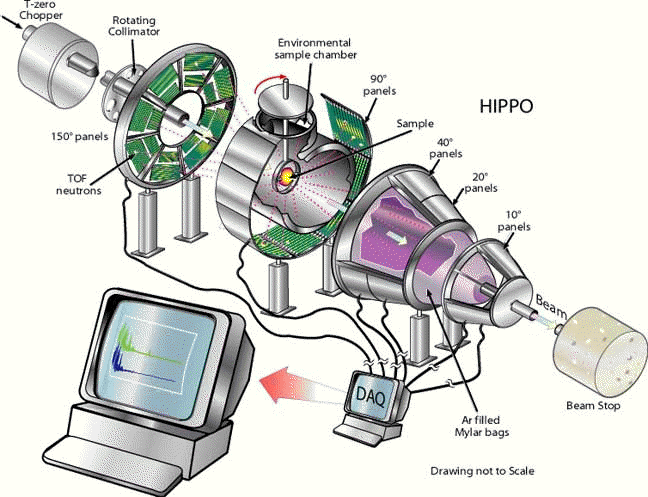
The HIPPO sample chamber under construction at Allied Technology, Alameda CA. Kristin Bennett, Rudy Wenk, Yanxia Xie and George Weber inspect it during final testing. 4.13.2000

Darrick Williams aligning the vacuum furnace in the sample well (8.1.2002)
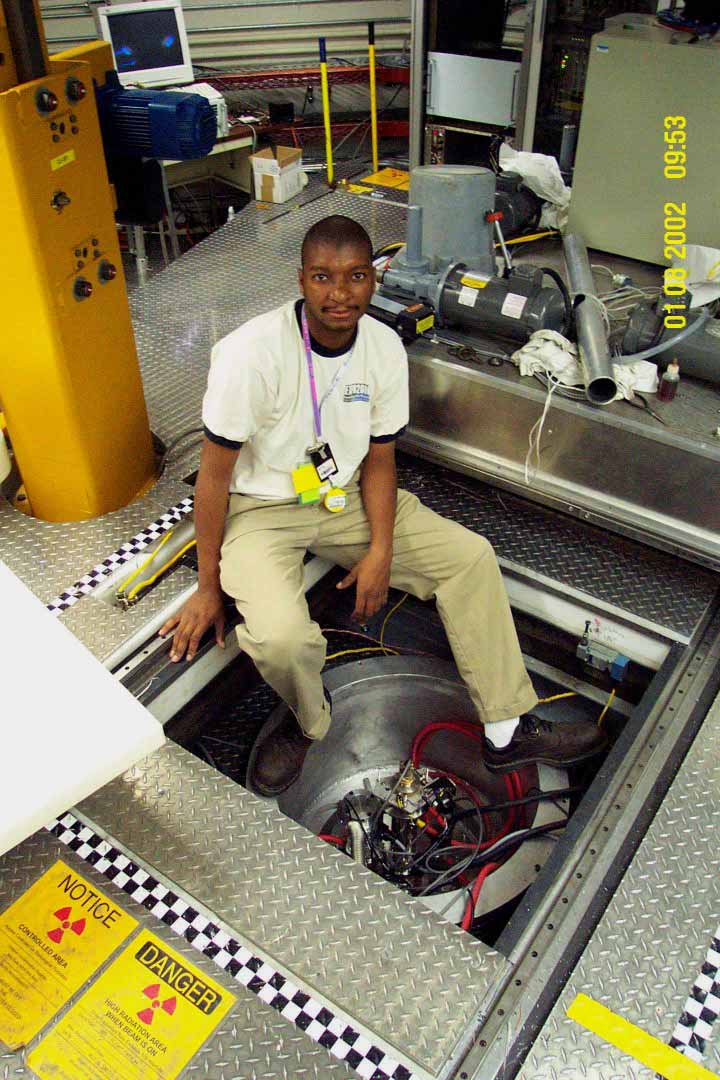
Instrument platform with data acquisition system (DAQ) in the background. Each blinking green light corresponds to one of the 1500 detector tubes.
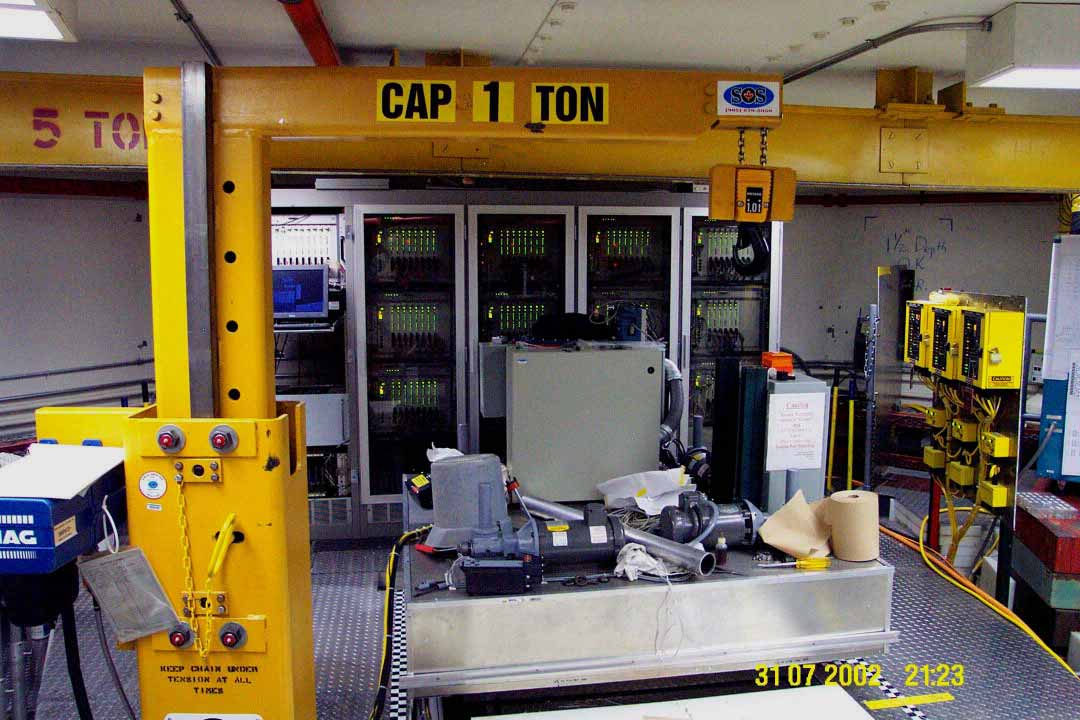
Automatic sample changer with texture samples. Cylindrical samples, about 1cm in diameter are optimal.
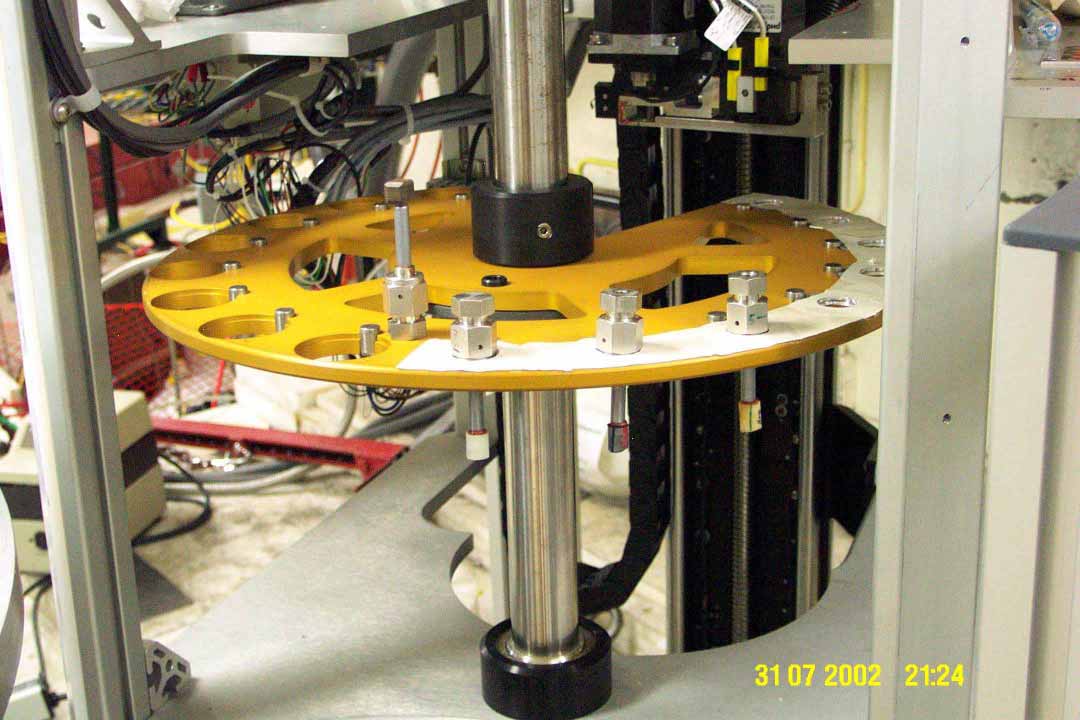
The core of the HIPPO design features a short initial flight path of 9m at Flight Path 4 of the the Lujan Center and an array of 1400 10atm 3He detector tubes covering more than 4.5m2 with five detector banks at scattering angles ranging from backscattering (nominally 150° ) to low forward scattering (nominally 10° ). A To chopper removes the fast neutron prompt pulse. The collimation views a 12cm diameter round portion of a high intensity ambient water moderator, and converges to a maximum round beam size of 2 cm diameter at the sample position. For most applications samples ought to be fully immersed in the neutron beam and should not exceed this size. Smaller beam sizes at the sample position can be produced with adjustable collimation. The count rate for some experiments is approximately 20-60 times what is currently obtained on the present High Intensity Powder Diffractometer (HIPD), which enables measurements in as little as 5-10s. The data acquisition will is based on current VME technology and make use of web-based visualization and control software.
In a time-of-flight diffractometer each detector in a bank records a full d (time) spectrum. The different banks have different resolution (10° about 5%, 150° about 0.35%) and emphasize a different d-range (low angle banks high d-range, high angle banks low d-range). Different banks are therefore used in different applications. Most data obtained with the new diffractometer can be readily analyzed with existing software. Users can take processed data to their laboratories and process them on their PC with existing GSAS or MAUD Rietveld codes that have been modified for HIPPO data.
A large evacuated sample chamber (75 cm diameter cylinder) can accommodate various ancillary equipment such as cryostats and furnaces, pressure vessels and straining cells, goniometers, magnets and an automatic sample changer. With these capabilities in situ studies in a wide range of conditions can be performed. HIPPO is used primarily for high pressure/temperature, texture, liquid/amorphous materials and reaction-kinetic studies.
The University of California Materials Research Diffractometer project aims at creating an instrument with easy access for mainstream materials scientists, including students.
HIPPO is not intended to compete with conventional methods but to make use of the unique properties of neutron diffraction. These include
With TOF neutron diffraction each detector records a spectrum simultaneously. Depending on flight path, collimation geometry and Bragg angle, these spectra have good to excellent resolution and cover a wide d-range. In the case of HIPPO the specifications for different detector banks are:
| Bragg Angle | d-range | Resolution |
| (° ) | (Å) | % FWHM (100% DT/T) |
| 150 | 0.12-4.80 | 0.37 |
| 90 | 0.17-6.90 | 0.75 |
| 40 | 0.35-13.9 | 1.5 |
| 20 | 0.65-26.1 | 2.6 |
| 10 | 1.19-47.5 | 5.0 |
Information from different detector banks can be combined.
Processing of neutron diffraction spectra has been greatly quantified and facilitated through application of the Rietveld technique and applying it to bulk materials. A wealth of information is contained in each spectrum. Some examples are:
Several software packages exist to extract such information in an efficient and user-friendly manner. Two approaches are:
GSAS: Von Dreele R.B. (1997): Quantitative texture analysis by Rietveld refinement. J. Appl. Cryst. 30, 577-587.
MAUD: Lutterotti L., Matthies S., Wenk H.-R., Schultz A.J. and Richardson J.W. (1997): Combined texture and structure analysis of deformed limestone from time-of-flight neutron diffraction spectra. J. Appl. Phys. 81, 594-600.
(This will be updated weekly)
The HIPPO diffractometer can be applied in a wide variety of disciplines such as materials science and engineering, earth sciences, physics and chemistry. Examples of research include kinetics of reactions, high pressure investigations of complex systems with large sample volumes, intrinsic mechanical (texture and strain) and magnetic properties, texture evolution in polycrystals during deformation, recrystallization and phase transformations, preferred orientation and anisotropy of rocks (e.g. granite-mylonite, mantle peridotites), crystal structure of zeolites (Al-Si distribution, water), structure of liquids and melts (including Al-Si melts and glasses). It will be possible to perform dynamic experiments on bulk anisotropic samples at a wide range of temperature and pressure conditions.
Materials Science:
Earth Science:
Throughout fall considerable progress has been made in Berkeley to extract quantitative texture information from HIPPO data. Two methods have been developed and are being improved to make them routinely available to users:
If you want to determine textures of polycrystalline samples, a single sample setting is not sufficient to obtain coverage needed to determine an ODF. At this point we recommend six or eight sample rotations around a single (vertical) axis to obtain the coverages shown below. They provide enough data for a 10-15 degree ODF resolution (corresponding to harmonic order better than 22).
6 rotations: 0, 60, 120, 210, 270, 330
8 rotations (preferred): 0, 45, 90, 135, 202.5, 247.5, 292.5, 337.5
Below is pole figure coverage for 140 deg, 90 deg and 40 deg detector banks for 0 deg rotation (left) and 45 deg rotation (right). Each circle corresponds to a detector bank. Incident neutron beam is at X. 140 deg. detectors are on the small circle closest to X etc.
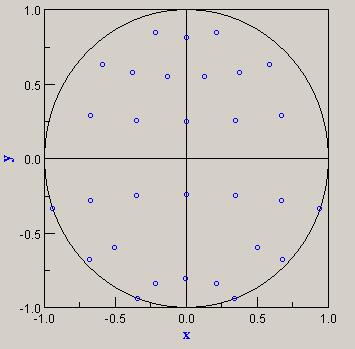
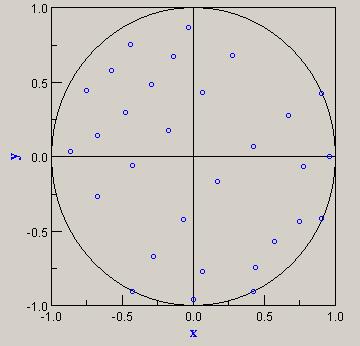
Below is pole figure coverage for 6 (left) and 8 (right) rotations around vertical axis (omega in MAUD). Incident neutron beam at X.
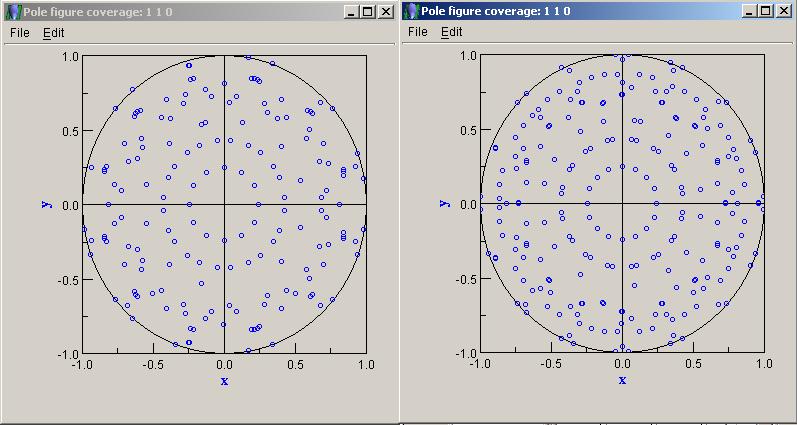
A considerable problem are erratic detector fluctuations, e.g. visible in temporary fluctuations in background intensity in the stack of spectra below (look, for example in the blue regions):
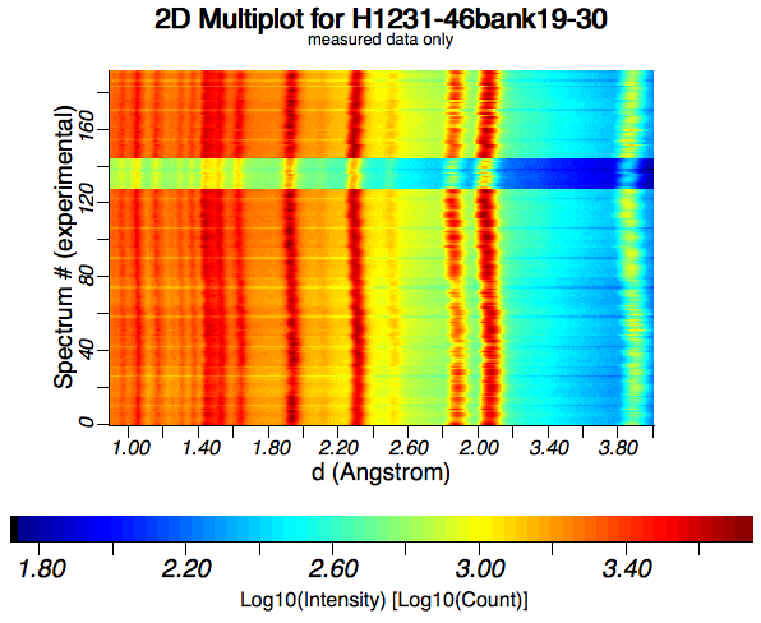
Nevertheless satisfactory results were obtained for the limestone standard and HIPPO pole figures (measured in less than half an hour) compare favorable with data from D20 at ILL, measured over 8 hours (courtesy L. Lutterotti). No smoothing is applied to better reveal details.
HIPPO

ILL (D20)
A program called STONE, with Los Alamos UCDRD and LANSCE support, is now in place to assist UC and New Mexico University users. It includes the following provisions:
Hans-Rudolf Wenk
Dept. Geology and Geophysics
U.C. Berkeley CA 94720
Last Edited ,)/,(/,(